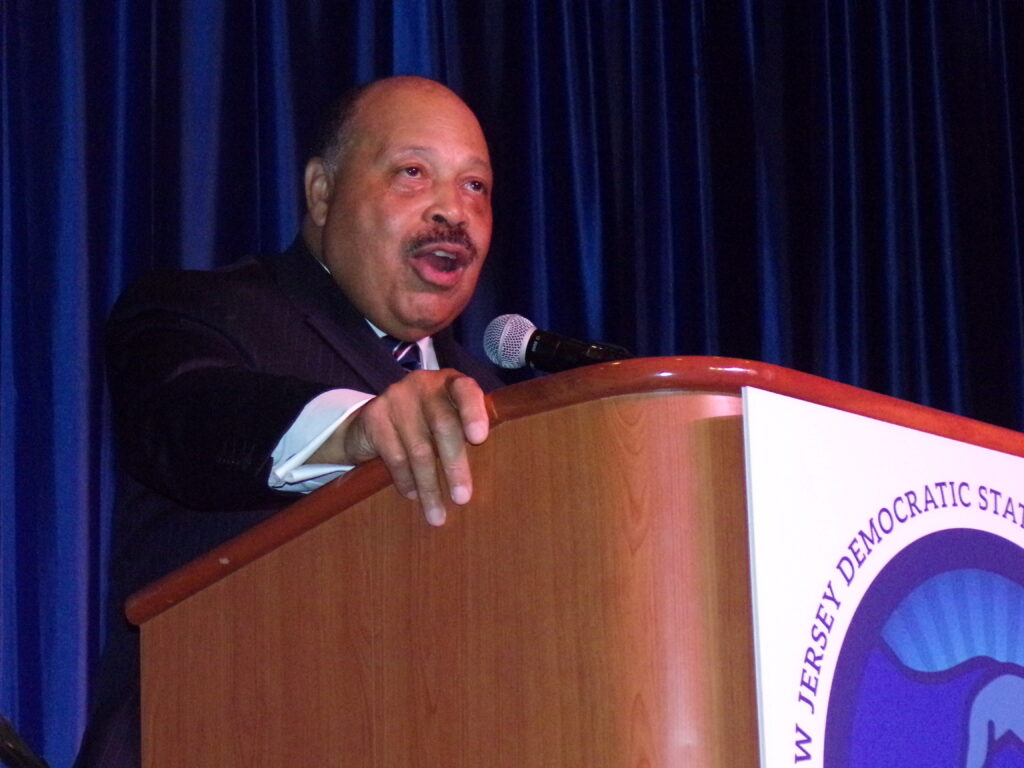ELEC: State Pay-to-Play Laws Left Big Hole in Big Six Coffers

The state’s “Big Six” political fund-raising committees received 94 percent less money from public
contractors during the past decade than they did during the previous one, according to a new analysis by the New Jersey Election Law Enforcement Commission (ELEC).
Between 1999 and 2008, the two state parties and four legislative leadership committees took in an
estimated $23.1 million from law firms, engineers, accountants, construction firms and others with public contracts. Total receipts during 2009 and 2019 sank to $1.4 million, according to ELEC’s analysis.
Party committees got an average of $2.3 million from contractors during the earlier decade versus
$123,472 during the most recent one.
Table 1
Annual Contributions by Public
Contractors to Big Six Committees
YEAR AMOUNT YEAR AMOUNT
2009 $ 175,775
1999 $ 1,475,562 2010 $ 114,400
2000 $ 1,572,225 2011 $ 73,075
2001 $ 5,163,859 2012 $ 81,349
2002 $ 2,427,743 2013 $ 74,068
2003 $ 3,888,145 2014 $ 90,321
2004 $ 2,786,767 2015 $ 93,550
2005 $ 1,996,315 2016 $ 72,750
2006 $ 973,750 2017 $ 268,750
2007 $ 1,820,705 2018 $ 230,750
2008 $ 971,008 2019 $ 83,403
Total-1999-2008 $23,076,079 Total-2009-2019 $1,358,191
Average-1999-2008 $ 2,307,608 Average-2009-2019 $ 123,472
NJ ELEC Page 2 of 3
State Pay-to-Play Laws Left Big Hole in Big Six Coffers January 19, 2021
Jeff Brindle, ELEC’s Executive Director, noted that the Big Six received less than $83,403 from
contractors in 2019. In the peak year for contractor giving in 2001, the Big Six received nearly 62 times more money- $5.2 million, he said.
Another way of looking at the decline in contributions by public contractors is to focus on the top ten
contractor-donors.
An analysis shows that three engineering firms, six law firms and a construction firm were the ten most
generous donors between 1999 to 2008. They collectively gave $5.7 million to the Big Six during that period.
During the next decade, they gave just under $6,098- a 99.9 percent drop.
Table 2
What Top Ten Contractor Donors Gave to Big Six During 1999-2008 Compared to 2009-2019
CONTRACTOR 1999-2008 2009-2019 TOTAL
Decotiis Fitzpatrick Et Al $ 834,337 $ 834,337
Lowenstein Sandler $ 637,825 $ 435 $ 638,260
Archer & Greiner $ 567,050 $4,911 $ 571,961
Schoor DePalma1 $ 568,610 $ 568,610
Riker Danzig Et Al $ 538,700 $ 128 $ 538,828
Gibbons PC $ 523,665 $ 523,665
Parker Mckay $ 520,500 $ 520,500
Remington & Vernick $ 518,550 $ 324 $ 518,874
T&M Associates $ 507,100 $ 300 $ 507,400
Joseph Jingoli & Sons $ 484,835 $ 484,835
Total $5,701,172 $6,098 $5,707,269
Change -99.9%
“Our analysis seems to confirm my long-held belief that state laws against pay-to-play may be one of the
root causes for a downturn in political party fund-raising,” Brindle said.
Big Six committees between 1999 and 2008 raised about $150 million. The first pay-to-play law took
effect in 2005 but it didn’t limit contractor contributions to all Big Six committees until 2008. That is why the steepest drop starts in 2009.
Between 2009 and 2019, the Big Six collectively raised about $94.3 million- 37 percent less than the
previous decade.
“Those who wanted to see contractor contributions dry up will be glad to know that, at least with the Big
Six committees, pay-to-play laws worked,” said Brindle. “The downside is it has made it much harder for party officials to raise money and that has weakened party committees.”
Even if contractors could give larger donations to party committees, it wouldn’t totally solve their
problems.
If contractors had kept giving the 1999-2008 average of $2.3 million each year to the Big Six in the more
recent decade, they would have added $25.4 million to Big Six coffers.
Even so, total receipts still would down 22 percent.
Brindle said he believes another cause of Big Six funding woes is the rapid growth since 2005 of
independent spending committees in New Jersey. Ironically, increased independent spending may have been one of the unintended consequences of the curbs on contractor cash.
“Contractors now can get around the original intent of the law by simply cutting huge checks to those
independent committees along with traditional political action committees. To make matters worse, many independent groups are “dark money” committees, which hide the source of their funding,” he said. “We need to change the law so we allow contractors to give more to parties while sharply reducing what they can give to traditional PACs,” Brindle said.
ELEC has long recommended a list of bipartisan recommendations to try to streamline the pay-to-play
system and even strengthen enforcement by eliminating loopholes and confusion while permitting party
committees to accept larger checks from contractors and other donors. At the same time, it would ask lawmakers to restrict contractor contributions to political action committees to $1,000 instead of $7,200.
“Making it easier to give to party officials hopefully will redirect funds from independent groups back to
the parties. Plus, we will keep pressing for state legislation that would require full disclosure of contributions, including those of contractors, to independent groups that take part in elections,” he said.
“If a party committee accepts a big check from a contractor, at least the public will know it. Party officials
then can be held directly accountable if they exert undue influence over a contract. It actually would make it easier to expose corruption.”
“Today’s system takes away such direct accountability and enables contractors to exert their influence by
donating to PACs and independent groups, making it harder to connect the dots between a contribution and a contract,” he said.
“Contractors or elected officials involved in illegal pay-to-play schemes should be held accountable and
subject to penalties under the law. Fortunately, most are honest people, and actual corruption is rare,” Brindle said.
“Political parties are one of the mainstays of democracy. We need to reinvigorate them, not starve them
of funds,” he said. “Parties historically have served as training grounds for political leadership. While parties sometimes must be adversarial, they also can help build bipartisan relationships that can promote compromise and ease the political polarization that is plaguing us today.”












Leave a Reply